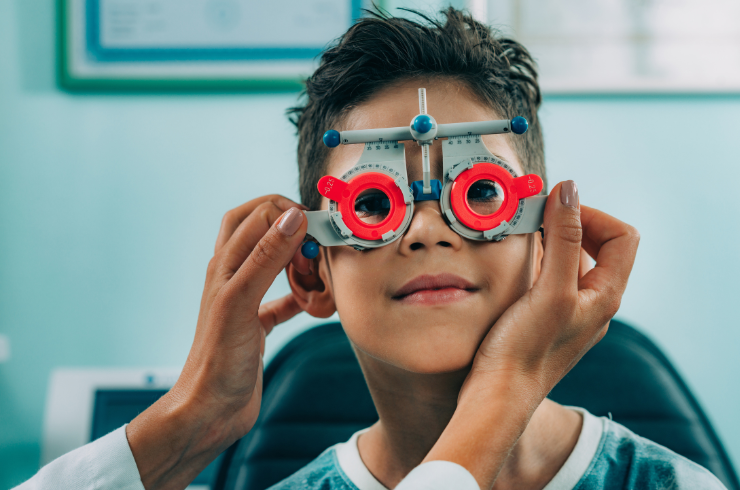Pediatric Eye Care
- Home
- Services
- Pediatric Eye Care

Understanding Pediatric Eye Care
Pediatric eye care focuses on the eye health and vision needs of infants, children, and adolescents. Early detection and appropriate treatment of eye conditions are crucial for ensuring healthy visual development and overall quality of life for children.
Importance of Regular Eye Exams
Regular eye examinations are essential for children as many eye disorders can go unnoticed. Timely screenings can help identify issues that may affect vision and learning, including:
- Refractive errors (nearsightedness, farsightedness, astigmatism)
- Amblyopia (lazy eye)
- Strabismus (crossed eyes)
- Congenital eye disorders
When to Schedule an Eye Exam
The American Academy of Pediatrics and the American Academy of Ophthalmology recommend the following timelines for eye exams:
- At birth: Newborns should be assessed for eye health during well-baby visits.
- At 6 months: An eye exam is recommended to check for any eye abnormalities.
- At 3 years: Children should receive a comprehensive eye examination.
- Before starting school (around age 5): A full eye check-up is crucial for determining readiness for school.
- Regular check-ups: Children should have eye exams every 1-2 years thereafter, or as recommended by an eye care professional.
Common Pediatric Eye Conditions
Some common eye conditions that may affect children include:
- Amblyopia: Often referred to as lazy eye, it occurs when one eye does not develop proper vision.
- Strabismus: A condition where the eyes do not align properly, which can lead to amblyopia.
- Refractive Errors: Issues such as nearsightedness, farsightedness, and astigmatism that can affect visual clarity.
- Congenital Cataracts: Clouding of the lens present at birth that can impair vision.
- Color Vision Deficiency: Difficulty in distinguishing certain colors, often inherited.
Signs of Eye Problems in Children
Parents should watch for signs that may indicate eye problems, including:
- Frequent squinting or eye rubbing
- Difficulty concentrating on tasks
- Avoiding reading or other close-up work
- Tilting the head or covering one eye to see better
- Sudden changes in vision or eye appearance
Treatment Options
Treatment for pediatric eye conditions can vary and may include:
- Prescription Glasses: To correct refractive errors.
- Vision Therapy: Customized exercises aimed at improving visual skills.
- Patching Therapy: Used to treat amblyopia by occluding the stronger eye to strengthen the weaker one.
- Surgery: In some cases, surgery may be necessary to correct strabismus or other structural problems.
Promoting Eye Health in Children
To promote healthy vision and eye care in children, consider the following tips:
- Encourage regular eye exams as recommended.
- Provide a healthy diet rich in vitamins A, C, and E, omega-3 fatty acids, and antioxidants.
- Limit screen time and encourage outdoor play to promote healthy eye development.
- Educate children on how to protect their eyes from injury and UV exposure.
Consult Our Pediatric Eye Care Specialists
If you have concerns about your child’s eye health or vision, contact us today to schedule an appointment with our experienced pediatric eye care specialists. We are committed to providing personalized care to ensure your child’s visual health and well-being!

